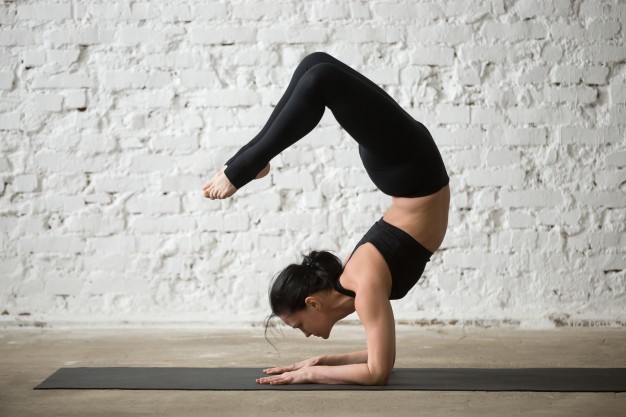
“Yoga is the journey of the self, through the self, to the self.” – Bhagavad Gita.
Yoga is more than stretching, deep breaths and handstands. It is not just for those who are flexible or have good balance. It has been said that it can change your life. I decided to do some personal research for this post because I wanted to know more for myself. How could yoga change a person’s life so profoundly? The answer is that the physical part of yoga is only a small part of this practice, and when you truly understand and apply what yoga teaches, it can actually change your life!
Trees are a symbol in yoga. The body is a tree. The mind is a tree. The teachings of Ashtanga yoga itself is also described as a tree, and it has eight limbs:
- Yama. This first limb is your attitude towards the environment. It includes ethical standards, integrity, focusing on your behavior and how you conduct yourself in life. Examples are nonviolence, truthfulness, not stealing, and not coveting others. Essentially the golden rule–doing to others as you would like done to you.
- Niyama. This is your attitude towards yourself. It includes self-discipline and spiritual observances (like regularly attending temple or church services, saying grace before meals, developing your own personal meditation practices, or making a habit of taking contemplative walks alone), as well as cleanliness, gratitude, and surrender to a God.
- Asana. This is what everyone thinks of when yoga comes up–the physical postures. In yogic beliefs, the body is a temple of spirit, and caring for it is an important stage of spiritual growth. Through the practice of asanas–also known as “flows” in yogi tongue–you develop the habit of discipline and the ability to concentrate, both of which are necessary for meditation.
- Pranayama. In hindu yoga, this step is the regulation of the breath through certain techniques, exercises, breathing practices. Long term, this practice can help with anxiety, stress, depression, insomnia, improved focus, and increased self-awareness.
- Pratyahara is sense restraint. This limb is about withdrawing yourself from any external information so you can draw attention internally to hear the sounds from within. The practice of pratyahara allows you to step back and take a look at yourself and objectively observe your cravings: habits that are perhaps detrimental to your health and which likely interfere with your inner growth.
- Dharana. This limb is centered on extended periods of concentration which then naturally lead to meditation. In the practice of concentration, which precedes meditation, you learn how to slow down the thinking process by concentrating on a single mental object: a specific energetic center in the body, an image of a deity, or the silent repetition of a sound.
- Dhyana. Meditation or contemplation, the seventh stage of ashtanga, is the uninterrupted flow of concentration. Although concentration (dharana) and meditation (dhyana) may appear to be one and the same, a fine line of distinction exists between these two stages. Where dharana practices one-pointed attention, dhyana is ultimately a state of being keenly aware without focus. At this stage, the mind has been quieted, and in the stillness it produces few or no thoughts at all.
- Samadhi. This final limb is appointed to be integration of the other limbs. It is a complete stage of ecstasy. What Patanjali has described as the completion of the yogic path is what, deep down, all human beings aspire to: peace. We also might give some thought to the fact that this ultimate stage of yoga—enlightenment—can neither be bought nor possessed. It can only be experienced, the price of which is the continual devotion of the aspirant.
As you can see, the practice of yoga is so much more than stretching in downward dog. It is a journey of self control and self-enlightenment. It is being at peace with the world and striving to make it a better place. It is listening to your body’s needs and what the universe needs from you. It is a form of exercise that is incredibly beneficial for stamina, endurance and flexibility. It is the ability to be content with oneself as well as a degree of self-mastery. My favorite part about yoga is that it truly is a journey for each individual. Everyone is at a different level, and that is okay! This is the best metaphor for life; while one yogi is working on her lotus press, you might be working on not falling over in your warrior two lunge. Yoga teaches self-compassion; it teaches you to start where you stand and be grateful for each breath. It teaches you to honor all you do have and all you can do.
Grab a mat, and give it a try! See what your body can do. Start by simply stretching to get more connected with your body. Then download an application, like Daily Yoga or Yoga for Beginners to get acquainted with some basic yoga poses. You may even want to find a yoga class in your area. And if you love it, buy a membership to a yoga studio, find a friend you can do yoga with, or discover another way to you can bring the practice of yoga into your daily life! You will not regret it! Please feel free to contact me with any questions or if you would like to schedule a session!
References:
- Adam Hocke Yoga: “What is Yoga Self-Care?”
- Cluff Counseling: “8 Unique Ways to Practice Self-care”
- Cluff Counseling: “Doing the Things You Enjoy Can Help Your Anxiety”
- Cluff Counseling: “Finding Your Strengths”
- Cluff Counseling: “The Key to Slowing Down in a Fast-Paced World”
- Cluff Counseling: “Self-care: Is it Selfish?”
- Cluff Counseling: “Self-Compassion: A Neglected Form of Self-Care”
- Cluff Counseling: “Self-Esteem & Self-Worth: Two essential Components of the Self”
- Seattle Yoga News: “15 Beautiful Inspirational Yoga Quotes”
- Yoga Digest: “THE ART OF SELF CARE THROUGH YOGA”
- Yoga Journal: “5 Reasons to Practice Pranayama”

